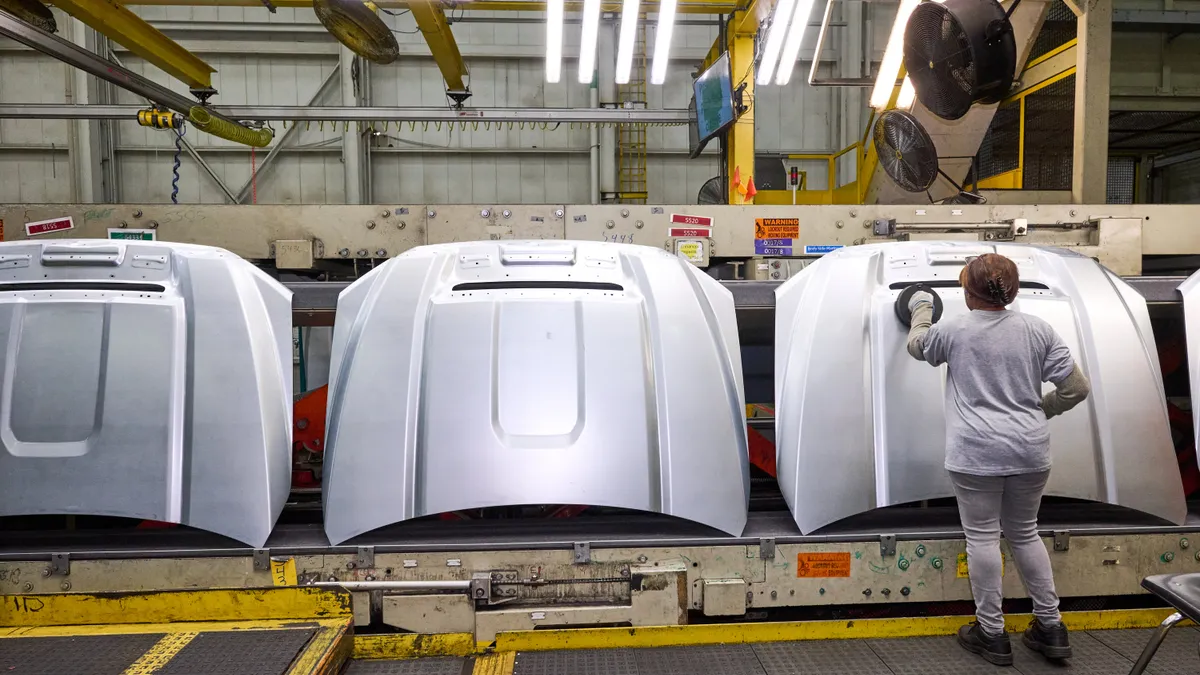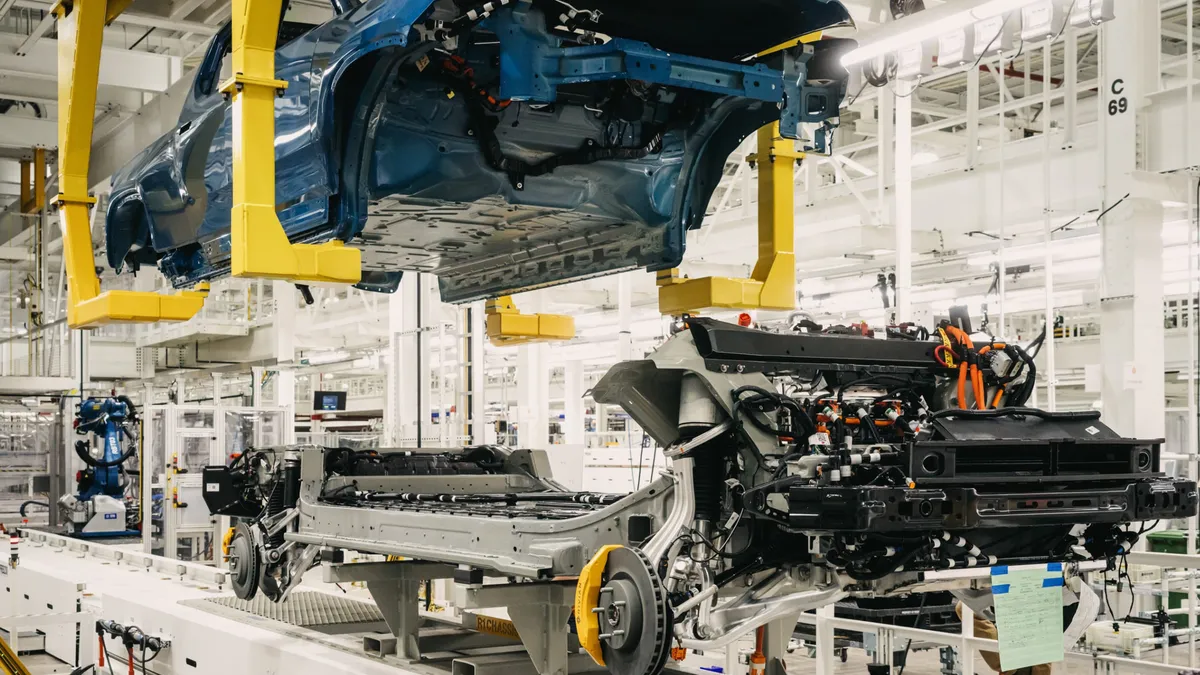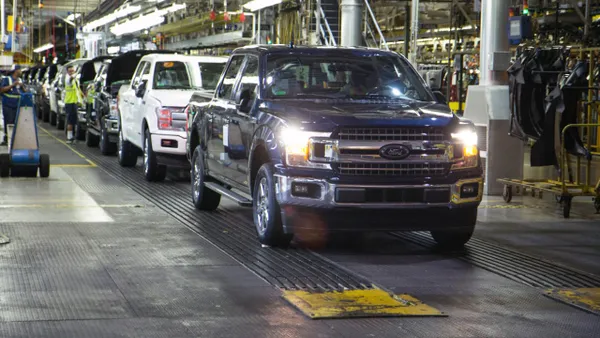President Donald Trump signed executive orders placing 25% tariffs on all steel and aluminum imports into the U.S. on Monday. The moves could make imported steel and aluminum more expensive for automakers and parts suppliers, creating additional challenges for a sector already dealing with a soft sales environment, experts say.
“It’s another hit to the industry,” Jay Cushing, senior bond analyst with Gimme Credit, said in an email to Automotive Dive on Tuesday.
A typical car contains about 1,000 pounds of steel with an estimated cost of between $6,000 and $7,000 per vehicle, Cushing said. A 25% tariff on steel could raise the cost of individual vehicles by as much as $1,500.
Stephanie Brinley, associate director of Auto Intelligence at S&P Global Mobility, agreed that more expensive raw materials will raise vehicle production costs.
“If the tariff is applied it will increase the cost of building a vehicle,” Brinley said. “Steel and aluminum are both heavily used in vehicle manufacturing, so it's going to have an impact.”
But the impacts of tariffs will vary by company. For example, Ford Motor Co. may not feel a direct effect of higher duties on imported steel and aluminum, CFO Sherry House said Tuesday at the Wolfe Research Auto, Auto Tech and Semiconductor Conference. She said 90% of steel used by Ford comes from domestic sources, with 10% coming from Canada and none from Mexico, adding aluminum is “not that competitive for us.”
However, that doesn’t mean the automaker will avoid any tariff impacts altogether.
“The reality is, though, our suppliers have international sources for aluminum, steel,” CEO Jim Farley said Tuesday. “So that price will come through and it may be a speculative part in the market where price would come up because the tariffs are even rumored.”
The latest action by the Trump administration on steel and aluminum imports has also raised concerns for the Specialty Equipment Market Association, which referred to tariffs as bargaining chips for trade negotiations that will negatively impact business costs.
“Tariffs disproportionately impact businesses that pay upfront for goods and services, with small- and medium-sized companies potentially experiencing cash-flow issues, delayed payments, and reduced capacity and inventory,” Karen Bailey-Chapman, the SEMA’s SVP of public and government affairs, said in an email. Bailey-Chapman also noted the organization is continuing to impress on government officials how such tariffs will affect the automotive aftermarket industry.
The increased tariffs drew praise from the U.S. steel industry, which expects the actions will curb imports and boost domestic production. However, the United Steelworkers International cautioned that placing the tariff on long-time trade partner Canada may do more harm than good.
“Canada has taken steps to coordinate their trade policies with the U.S. to respond to unfair foreign trade, and applying across-the-board tariffs ultimately hurts workers on both sides of the border,” United Steelworkers President David McCall said in a statement.
It is possible U.S. automakers may acquire more steel from domestic sources to circumvent higher costs created by tariffs, but increased demand also could lead to higher prices charged by American steel companies, Cushing said.
“My guess is that those U.S. steel producers would also likely boost their prices,” he said.












